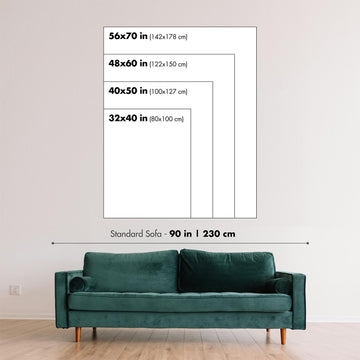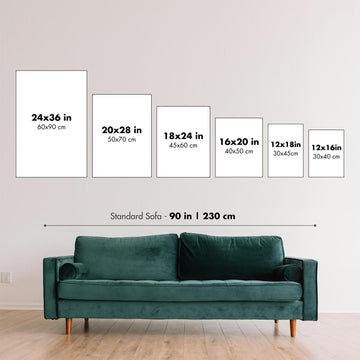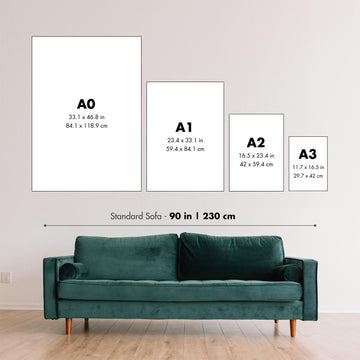

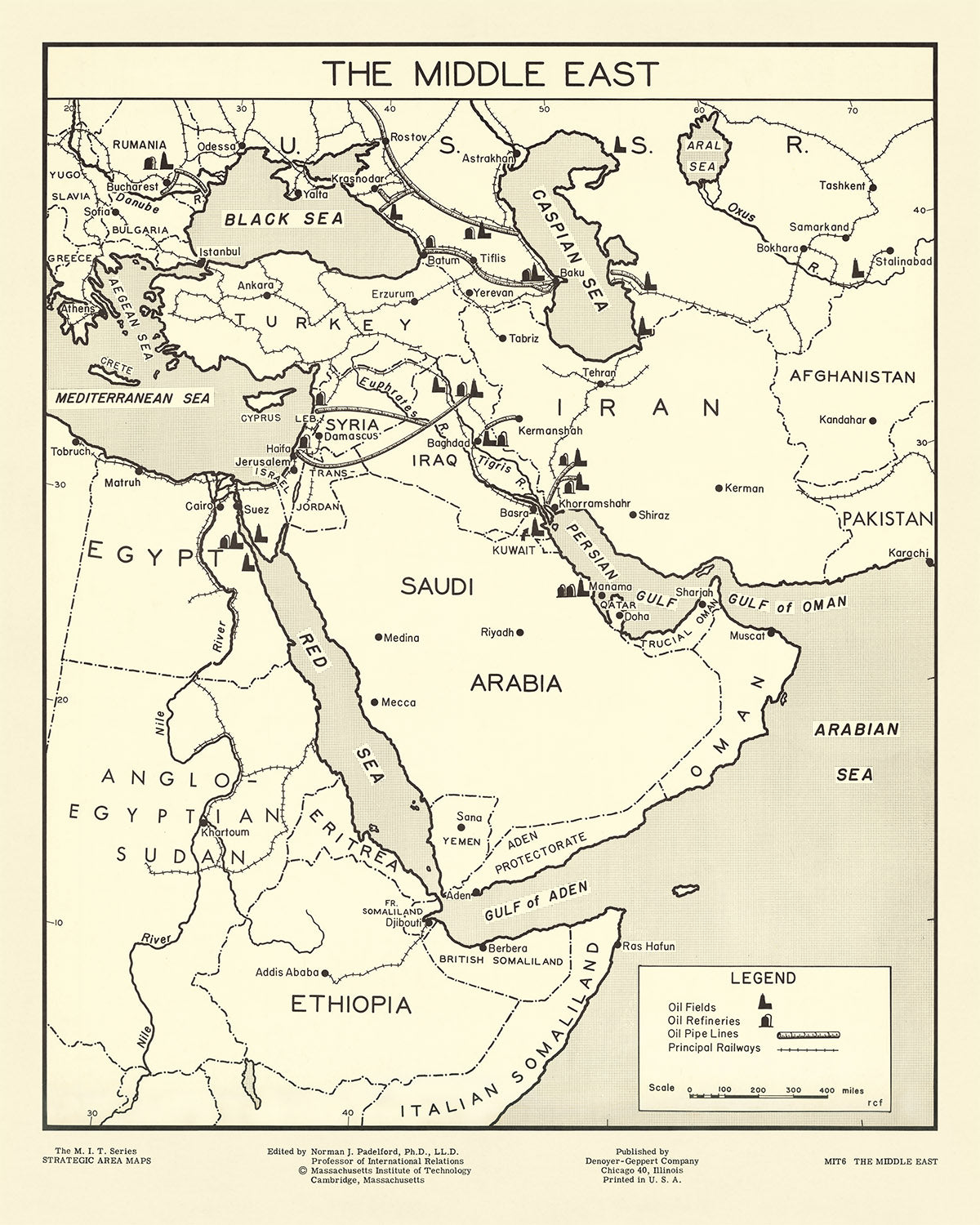

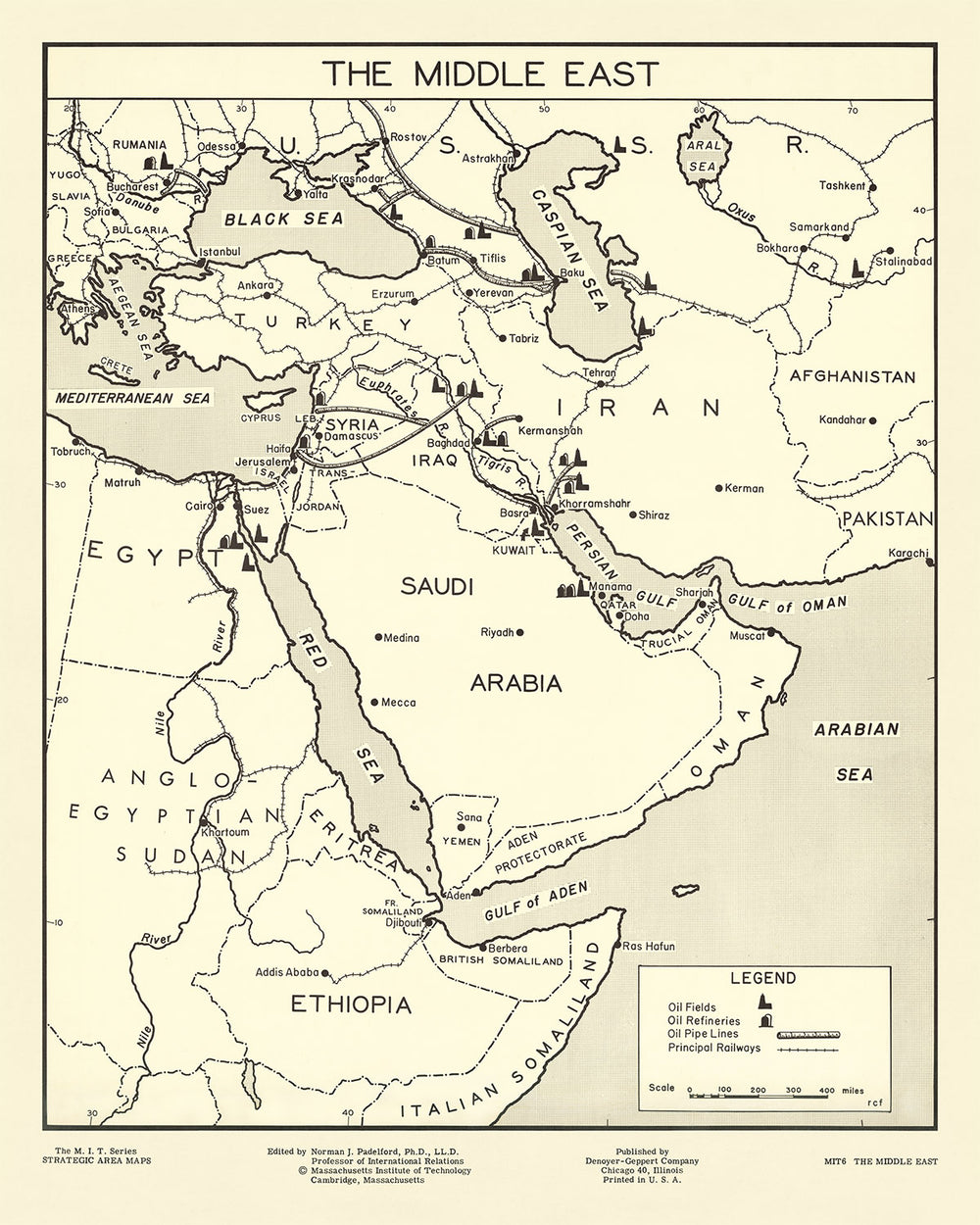

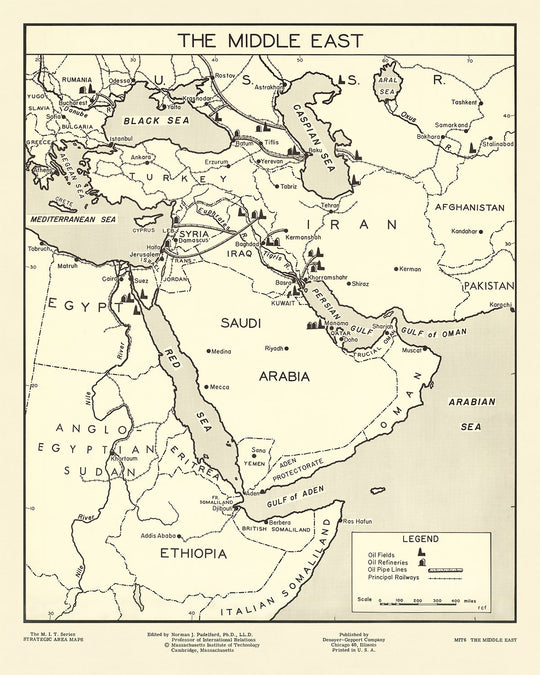












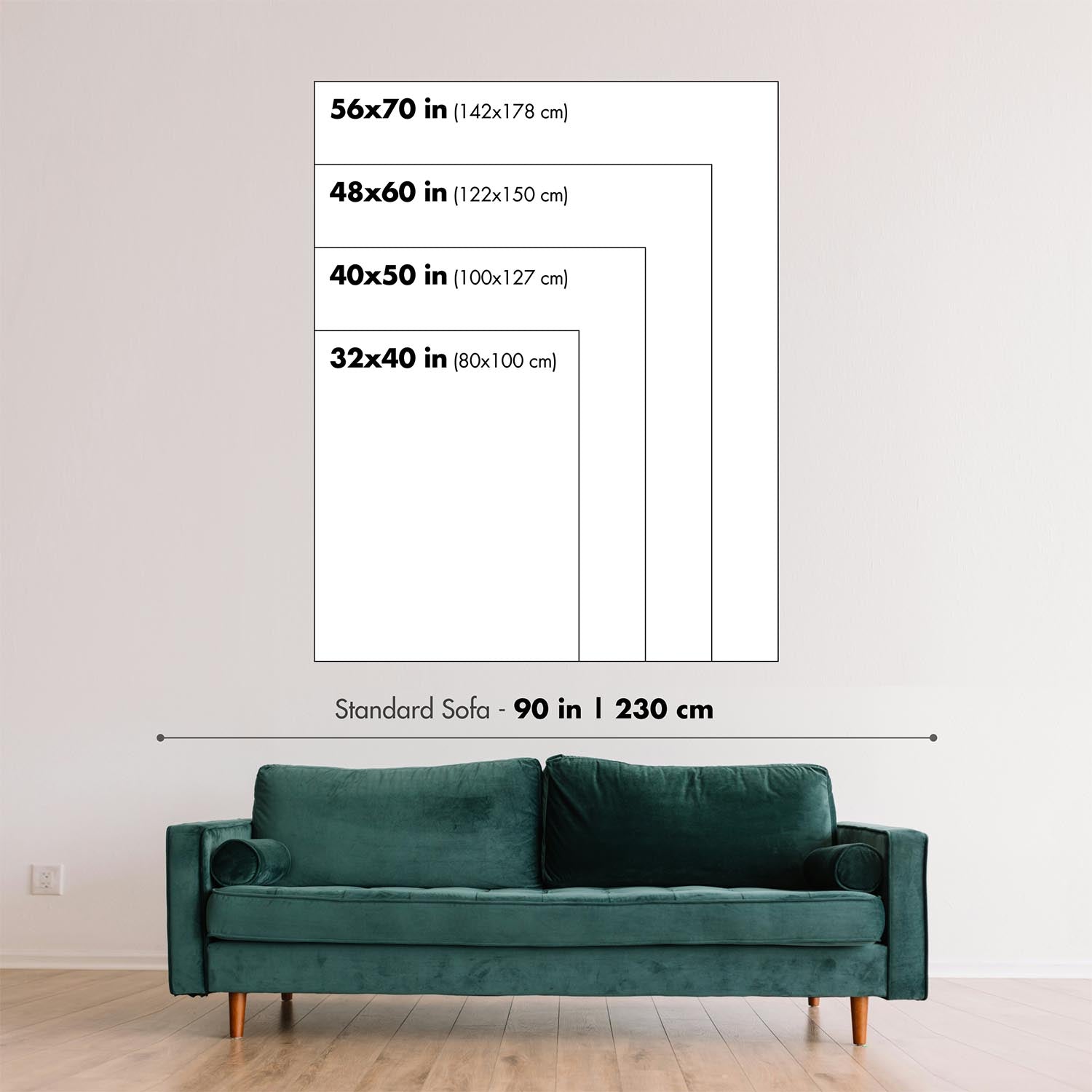
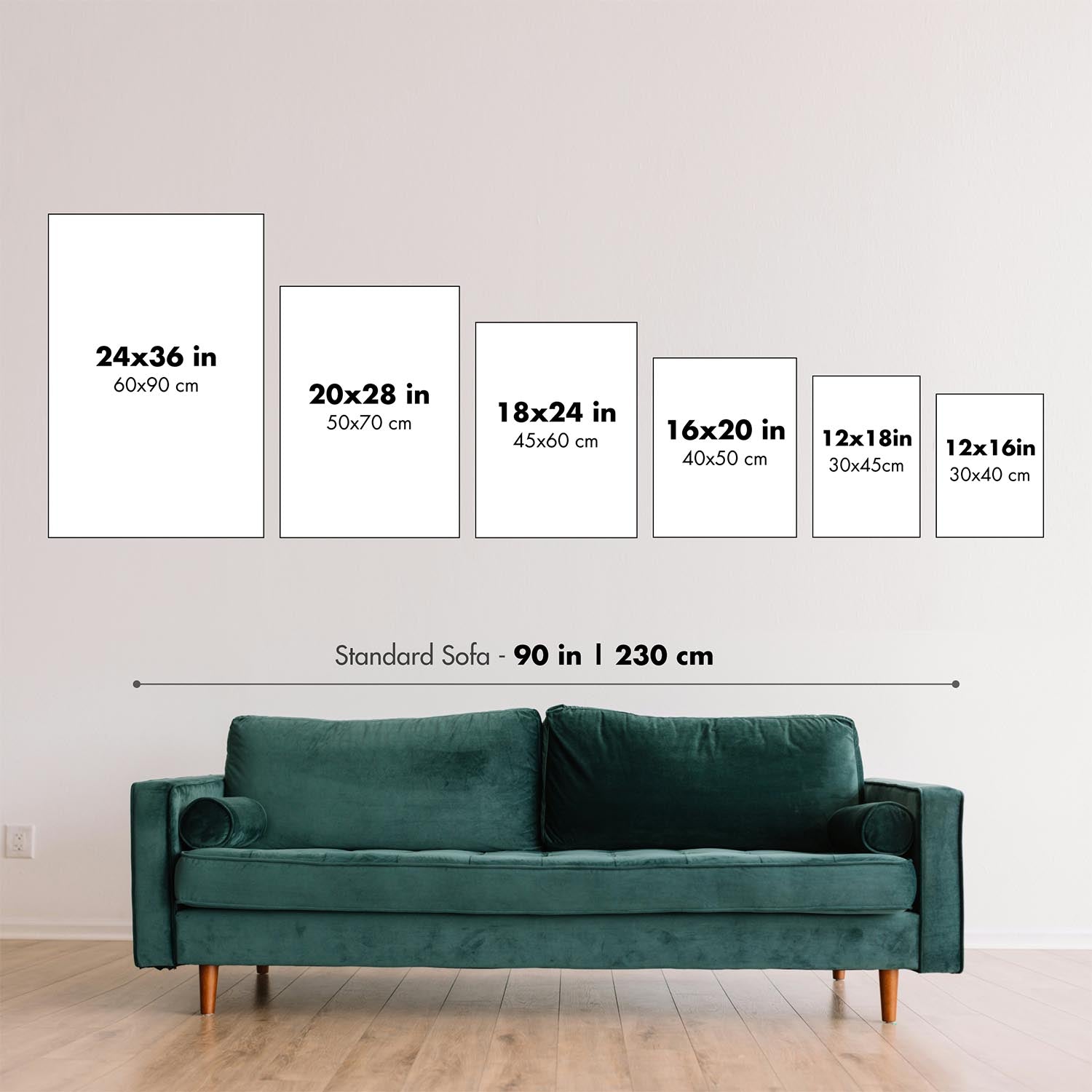
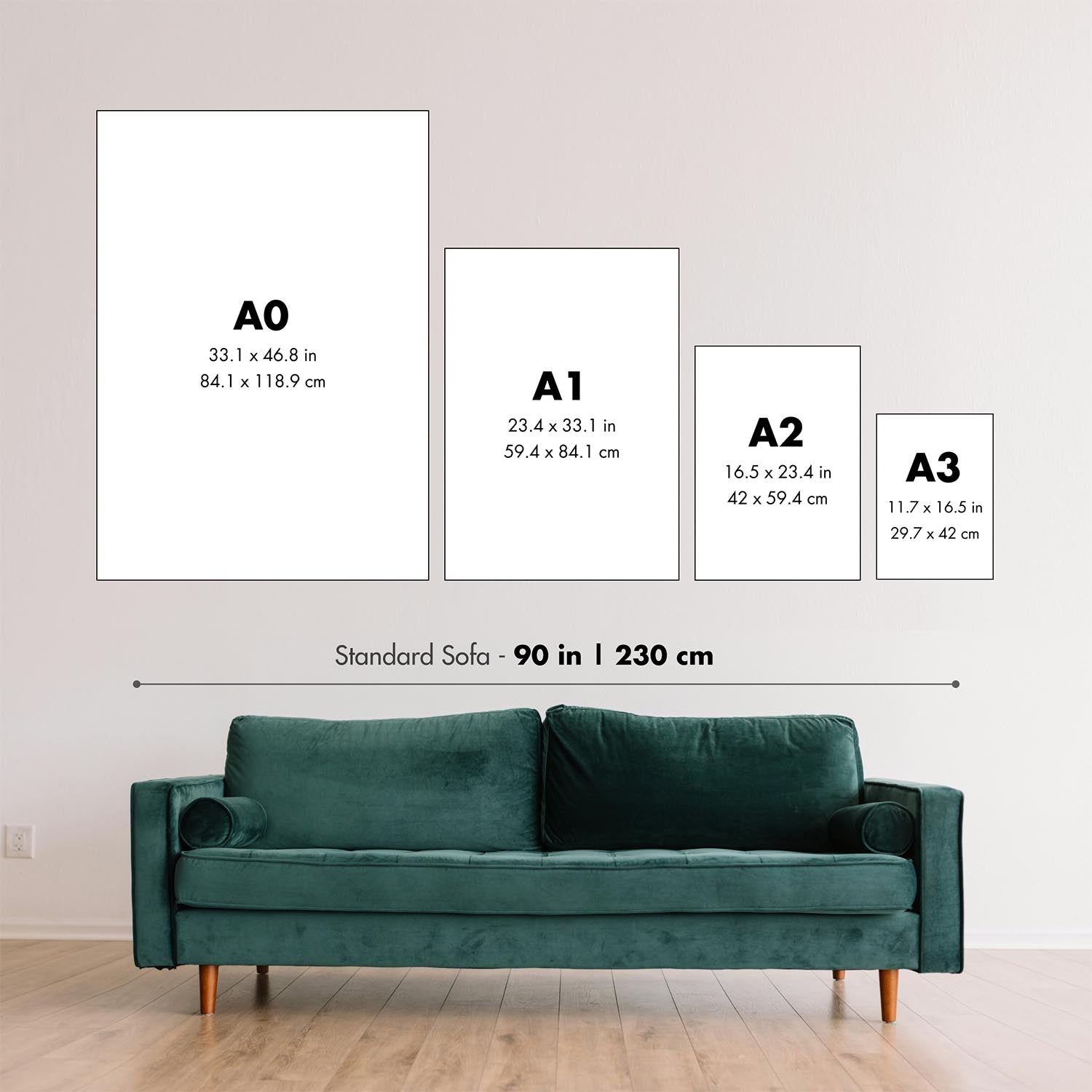
Old Map of Middle East Oil Industry by Padelford, 1950: Oil Fields, Pipelines, Railways, Saudi Arabia, Iran, UAE


-
![]() Handmade in the USA
Handmade in the USA
-
FREE worldwide delivery in 2-3 days ⓘ
Free Christmas delivery in 2-3 days
Your map should be delivered in 2-3 working days with free delivery, worldwide.
We make maps by hand locally in 23 countries, including the USA
![]() . If you're buying a gift for someone in another country, we will make the map locally to them.
. If you're buying a gift for someone in another country, we will make the map locally to them.You will never pay import tax or customs duty.
Check the Christmas delivery guide for order deadlines.
Express delivery is available at checkout which can reduce the delivery time to 1-2 days.
Please note that personalised maps, and larger framed maps, can take longer to produce and deliver.
If you need your order to arrive by a certain date, contact me and we can discuss your options.
-
90 day money back guarantee
ⓘ
90 days to return and refund
Products can be returned within 90 days for a full refund, or exchange for another product.
For personalised and custom made items, we may offer you store credit or a non-expiring gift card, as we cannot resell personalised orders.
If you have any questions, get in touch. For more information, see our full returns & exchanges policy.

My maps are rare, museum-grade, restored old maps sourced from libraries, auction houses and private collections across the globe.
Framing & free personalisation available
1. Select your size
➢ Pick the closest size (above)
➢ Provide the exact size in millimetres
➢ Add to bag and checkout as normal
2. Frame & personalize your map
Make your map unique with framing, hand-drawn customisation, vintage ageing, pop art text, unique 3D styling and moreGift message & custom finish

If you want to add a gift message, or a finish (jigsaw, aluminium board, etc.) that is not available here, please request it in the "order note" when you check out.
Every order is custom made, so if you need the size adjusted slightly, or printed on an unusual material, just let us know. We've done thousands of custom orders over the years, so there's (almost) nothing we can't manage.
You can also contact us before you order, if you prefer!
Order by 10am tomorrow for free Christmas delivery

- Handmade locally. No import duty or tax
- FREE Delivery. Arrives in 2-3 days
- Love it or your money back
- Questions? WhatsApp me any time
Own a piece of history
5,000+ 5 star reviews


Step into the rich historical tapestry of the Middle East with this meticulously crafted map from 1950, created by the esteemed Norman J. Padelford, Ph.D., LL.D., a professor of International Relations at MIT. This map is part of the Massachusetts Institute of Technology's series of strategic area maps, designed to educate students on the geopolitical and economic landscapes of critical regions. It captures the nascent stages of the Middle East's oil industry, a sector that would soon become a cornerstone of global energy production and international relations.
The map provides a detailed illustration of the early oil fields, refineries, and pipelines in key countries such as Saudi Arabia, Kuwait, Iraq, Iran, and around the Caspian Sea. It uses clear and distinct symbols to represent oil fields, refineries, and pipelines, making it an invaluable resource for understanding the infrastructure and strategic importance of the region during the mid-20th century. This visual representation of the oil industry’s early development offers a fascinating glimpse into the beginnings of what would become a global economic powerhouse.
In addition to its focus on the oil industry, the map also highlights the principal railways that crisscross the region, showcasing the interconnectedness of transportation and trade routes. Major cities like Baghdad, Tehran, Riyadh, Cairo, and Istanbul are prominently marked, providing context to the geopolitical significance of these urban centers. The inclusion of these railways underscores the importance of logistical networks in the economic and political landscape of the Middle East.
The design and style of the map are characteristic of mid-20th-century cartography, with a clear, informative, and aesthetically pleasing layout. The use of infographics to convey complex information in an accessible manner is a testament to the mapmaker’s skill and the educational purpose of the map. Norman J. Padelford's work is not only a tool for learning but also a piece of art that captures the essence of a pivotal era in Middle Eastern history.
This map is more than just a geographical representation; it is a historical document that reflects the geopolitical and economic dynamics of the time. The early stages of oil exploitation in the Middle East had far-reaching implications for global politics and economics, making this map a valuable artifact for historians, collectors, and anyone with an interest in the region's rich history. Owning this map is like holding a piece of history, offering insights into the strategic importance of the Middle East and the early development of its oil industry.
Places on this map
- Countries:
- Saudi Arabia
- Kuwait
- Iraq
- Iran
- Turkey
- Egypt
- Syria
- Jordan
- Yemen
- Afghanistan
- Pakistan
- Ethiopia
- Anglo-Egyptian Sudan
- British Somaliland
- Italian Somaliland
- Cities:
- Baghdad
- Tehran
- Riyadh
- Cairo
- Istanbul
- Damascus
- Jerusalem
- Mecca
- Medina
- Basra
- Kermanshah
- Shiraz
- Khorramshahr
- Tabriz
- Baku
- Ankara
- Addis Ababa
- Karachi
- Sana
- Aden
- Manama
- Doha
- Muscat
- Djibouti
- Berbera
- Ras Hafun
- Seas and Gulfs:
- Mediterranean Sea
- Red Sea
- Persian Gulf
- Caspian Sea
- Black Sea
- Arabian Sea
- Gulf of Oman
- Gulf of Aden
- Rivers:
- Nile River
- Tigris River
- Euphrates River
Notable Features & Landmarks
- Oil Fields: Marked with specific symbols indicating locations of oil extraction
- Oil Refineries: Identified with distinct symbols showing where oil processing occurs
- Oil Pipelines: Illustrated with lines depicting the routes of oil transportation
- Principal Railways: Shown with dashed lines representing key railway routes
- Major Cities: Cities like Baghdad, Tehran, Riyadh, Cairo, and Istanbul are prominently marked
- Geographical Features: Rivers, seas, and other notable geographical landmarks are clearly labeled
- Political Boundaries: Clear demarcation of country borders and significant political regions
- Historical Context: Reflects the early development of the oil industry in the Middle East and its strategic importance in global politics
Historical and design context
- Creation date: 1950
- Mapmaker/Publisher:
- Mapmaker: Norman J. Padelford, Ph.D., LL.D., Professor of International Relations at Massachusetts Institute of Technology (MIT)
- Publisher: Denoyer-Geppert Company, Chicago, Illinois
- Purpose and Audience: Prepared for the education of students of international relations
- Themes and Topics:
- Focuses on the nascent oil industry in the Middle East during the 1940s and early 1950s
- Illustrates oil fields, oil refineries, oil pipelines, and principal railways
- Highlights the strategic importance of the Middle East in global oil production
- Design and Style:
- Infographic style, conveying information about the oil industry in an illustrative way
- Uses symbols to represent oil fields, refineries, pipelines, and railways
- Historical Significance:
- One of the earliest American maps focusing specifically on the Middle East oil industry
- Reflects the geopolitical importance of the region during the early stages of large-scale oil exploitation
- Provides historical insight into the infrastructure and strategic considerations of the time
Please double check the images to make sure that a specific town or place is shown on this map. You can also get in touch and ask us to check the map for you.
This map looks great at every size, but I always recommend going for a larger size if you have space. That way you can easily make out all of the details.
This map looks amazing at sizes all the way up to 100in (250cm). If you are looking for a larger map, please get in touch.
The model in the listing images is holding the 16x20in (40x50cm) version of this map.
The fifth listing image shows an example of my map personalisation service.
If you’re looking for something slightly different, check out my collection of the best old maps to see if something else catches your eye.
Please contact me to check if a certain location, landmark or feature is shown on this map.
This would make a wonderful birthday, Christmas, Father's Day, work leaving, anniversary or housewarming gift for someone from the areas covered by this map.
This map is available as a giclée print on acid free archival matte paper, or you can buy it framed. The frame is a nice, simple black frame that suits most aesthetics. Please get in touch if you'd like a different frame colour or material. My frames are glazed with super-clear museum-grade acrylic (perspex/acrylite), which is significantly less reflective than glass, safer, and will always arrive in perfect condition.
This map is also available as a float framed canvas, sometimes known as a shadow gap framed canvas or canvas floater. The map is printed on artist's cotton canvas and then stretched over a handmade box frame. We then "float" the canvas inside a wooden frame, which is available in a range of colours (black, dark brown, oak, antique gold and white). This is a wonderful way to present a map without glazing in front. See some examples of float framed canvas maps and explore the differences between my different finishes.
For something truly unique, this map is also available in "Unique 3D", our trademarked process that dramatically transforms the map so that it has a wonderful sense of depth. We combine the original map with detailed topography and elevation data, so that mountains and the terrain really "pop". For more info and examples of 3D maps, check my Unique 3D page.
For most orders, delivery time is about 3 working days. Personalised and customised products take longer, as I have to do the personalisation and send it to you for approval, which usually takes 1 or 2 days.
Please note that very large framed orders usually take longer to make and deliver.
If you need your order to arrive by a certain date, please contact me before you order so that we can find the best way of making sure you get your order in time.
I print and frame maps and artwork in 23 countries around the world. This means your order will be made locally, which cuts down on delivery time and ensures that it won't be damaged during delivery. You'll never pay customs or import duty, and we'll put less CO2 into the air.
All of my maps and art prints are well packaged and sent in a rugged tube if unframed, or surrounded by foam if framed.
I try to send out all orders within 1 or 2 days of receiving your order, though some products (like face masks, mugs and tote bags) can take longer to make.
If you select Express Delivery at checkout your order we will prioritise your order and send it out by 1-day courier (Fedex, DHL, UPS, Parcelforce).
Next Day delivery is also available in some countries (US, UK, Singapore, UAE) but please try to order early in the day so that we can get it sent out on time.
My standard frame is a gallery style black ash hardwood frame. It is simple and quite modern looking. My standard frame is around 20mm (0.8in) wide.
I use super-clear acrylic (perspex/acrylite) for the frame glass. It's lighter and safer than glass - and it looks better, as the reflectivity is lower.
Six standard frame colours are available for free (black, dark brown, dark grey, oak, white and antique gold). Custom framing and mounting/matting is available if you're looking for something else.
Most maps, art and illustrations are also available as a framed canvas. We use matte (not shiny) cotton canvas, stretch it over a sustainably sourced box wood frame, and then 'float' the piece within a wood frame. The end result is quite beautiful, and there's no glazing to get in the way.
All frames are provided "ready to hang", with either a string or brackets on the back. Very large frames will have heavy duty hanging plates and/or a mounting baton. If you have any questions, please get in touch.
See some examples of my framed maps and framed canvas maps.
Alternatively, I can also supply old maps and artwork on canvas, foam board, cotton rag and other materials.
If you want to frame your map or artwork yourself, please read my size guide first.
My maps are extremely high quality reproductions of original maps.
I source original, rare maps from libraries, auction houses and private collections around the world, restore them at my London workshop, and then use specialist giclée inks and printers to create beautiful maps that look even better than the original.
My maps are printed on acid-free archival matte (not glossy) paper that feels very high quality and almost like card. In technical terms the paper weight/thickness is 10mil/200gsm. It's perfect for framing.
I print with Epson ultrachrome giclée UV fade resistant pigment inks - some of the best inks you can find.
I can also make maps on canvas, cotton rag and other exotic materials.
Learn more about The Unique Maps Co.
Map personalisation
If you're looking for the perfect anniversary or housewarming gift, I can personalise your map to make it truly unique. For example, I can add a short message, or highlight an important location, or add your family's coat of arms.
The options are almost infinite. Please see my map personalisation page for some wonderful examples of what's possible.
To order a personalised map, select "personalise your map" before adding it to your basket.
Get in touch if you're looking for more complex customisations and personalisations.
Map ageing
I have been asked hundreds of times over the years by customers if they could buy a map that looks even older.
Well, now you can, by selecting Aged before you add a map to your basket.
All the product photos you see on this page show the map in its Original form. This is what the map looks like today.
If you select Aged, I will age your map by hand, using a special and unique process developed through years of studying old maps, talking to researchers to understand the chemistry of aging paper, and of course... lots of practice!
If you're unsure, stick to the Original colour of the map. If you want something a bit darker and older looking, go for Aged.
If you are not happy with your order for any reason, contact me and I'll get it fixed ASAP, free of charge. Please see my returns and refund policy for more information.
I am very confident you will like your restored map or art print. I have been doing this since 1984. I'm a 5-star Etsy seller. I have sold tens of thousands of maps and art prints and have over 5,000 real 5-star reviews. My work has been featured in interior design magazines, on the BBC, and on the walls of dozens of 5-star hotels.
I use a unique process to restore maps and artwork that is massively time consuming and labour intensive. Hunting down the original maps and illustrations can take months. I use state of the art and eye-wateringly expensive technology to scan and restore them. As a result, I guarantee my maps and art prints are a cut above the rest. I stand by my products and will always make sure you're 100% happy with what you receive.
Almost all of my maps and art prints look amazing at large sizes (200cm, 6.5ft+) and I can frame and deliver them to you as well, via special oversized courier. Contact me to discuss your specific needs.
Or try searching for something!
This service is currently unavailable,
sorry for the inconvenience.
Pair it with a frame
Frame options are for visualization purposes only.
FRAME STYLE
MATTING SIZE
BUILDING YOUR EXPERIENCE
powered by Blankwall
Take a few steps back and let your camera see more of the scene.
powered by Blankwall
Was this experience helpful?
Step into the rich historical tapestry of the Middle East with this meticulously crafted map from 1950, created by the esteemed Norman J. Padelford, Ph.D., LL.D., a professor of International Relations at MIT. This map is part of the Massachusetts Institute of Technology's series of strategic area maps, designed to educate students on the geopolitical and economic landscapes of critical regions. It captures the nascent stages of the Middle East's oil industry, a sector that would soon become a cornerstone of global energy production and international relations.
The map provides a detailed illustration of the early oil fields, refineries, and pipelines in key countries such as Saudi Arabia, Kuwait, Iraq, Iran, and around the Caspian Sea. It uses clear and distinct symbols to represent oil fields, refineries, and pipelines, making it an invaluable resource for understanding the infrastructure and strategic importance of the region during the mid-20th century. This visual representation of the oil industry’s early development offers a fascinating glimpse into the beginnings of what would become a global economic powerhouse.
In addition to its focus on the oil industry, the map also highlights the principal railways that crisscross the region, showcasing the interconnectedness of transportation and trade routes. Major cities like Baghdad, Tehran, Riyadh, Cairo, and Istanbul are prominently marked, providing context to the geopolitical significance of these urban centers. The inclusion of these railways underscores the importance of logistical networks in the economic and political landscape of the Middle East.
The design and style of the map are characteristic of mid-20th-century cartography, with a clear, informative, and aesthetically pleasing layout. The use of infographics to convey complex information in an accessible manner is a testament to the mapmaker’s skill and the educational purpose of the map. Norman J. Padelford's work is not only a tool for learning but also a piece of art that captures the essence of a pivotal era in Middle Eastern history.
This map is more than just a geographical representation; it is a historical document that reflects the geopolitical and economic dynamics of the time. The early stages of oil exploitation in the Middle East had far-reaching implications for global politics and economics, making this map a valuable artifact for historians, collectors, and anyone with an interest in the region's rich history. Owning this map is like holding a piece of history, offering insights into the strategic importance of the Middle East and the early development of its oil industry.
Places on this map
- Countries:
- Saudi Arabia
- Kuwait
- Iraq
- Iran
- Turkey
- Egypt
- Syria
- Jordan
- Yemen
- Afghanistan
- Pakistan
- Ethiopia
- Anglo-Egyptian Sudan
- British Somaliland
- Italian Somaliland
- Cities:
- Baghdad
- Tehran
- Riyadh
- Cairo
- Istanbul
- Damascus
- Jerusalem
- Mecca
- Medina
- Basra
- Kermanshah
- Shiraz
- Khorramshahr
- Tabriz
- Baku
- Ankara
- Addis Ababa
- Karachi
- Sana
- Aden
- Manama
- Doha
- Muscat
- Djibouti
- Berbera
- Ras Hafun
- Seas and Gulfs:
- Mediterranean Sea
- Red Sea
- Persian Gulf
- Caspian Sea
- Black Sea
- Arabian Sea
- Gulf of Oman
- Gulf of Aden
- Rivers:
- Nile River
- Tigris River
- Euphrates River
Notable Features & Landmarks
- Oil Fields: Marked with specific symbols indicating locations of oil extraction
- Oil Refineries: Identified with distinct symbols showing where oil processing occurs
- Oil Pipelines: Illustrated with lines depicting the routes of oil transportation
- Principal Railways: Shown with dashed lines representing key railway routes
- Major Cities: Cities like Baghdad, Tehran, Riyadh, Cairo, and Istanbul are prominently marked
- Geographical Features: Rivers, seas, and other notable geographical landmarks are clearly labeled
- Political Boundaries: Clear demarcation of country borders and significant political regions
- Historical Context: Reflects the early development of the oil industry in the Middle East and its strategic importance in global politics
Historical and design context
- Creation date: 1950
- Mapmaker/Publisher:
- Mapmaker: Norman J. Padelford, Ph.D., LL.D., Professor of International Relations at Massachusetts Institute of Technology (MIT)
- Publisher: Denoyer-Geppert Company, Chicago, Illinois
- Purpose and Audience: Prepared for the education of students of international relations
- Themes and Topics:
- Focuses on the nascent oil industry in the Middle East during the 1940s and early 1950s
- Illustrates oil fields, oil refineries, oil pipelines, and principal railways
- Highlights the strategic importance of the Middle East in global oil production
- Design and Style:
- Infographic style, conveying information about the oil industry in an illustrative way
- Uses symbols to represent oil fields, refineries, pipelines, and railways
- Historical Significance:
- One of the earliest American maps focusing specifically on the Middle East oil industry
- Reflects the geopolitical importance of the region during the early stages of large-scale oil exploitation
- Provides historical insight into the infrastructure and strategic considerations of the time
Please double check the images to make sure that a specific town or place is shown on this map. You can also get in touch and ask us to check the map for you.
This map looks great at every size, but I always recommend going for a larger size if you have space. That way you can easily make out all of the details.
This map looks amazing at sizes all the way up to 100in (250cm). If you are looking for a larger map, please get in touch.
The model in the listing images is holding the 16x20in (40x50cm) version of this map.
The fifth listing image shows an example of my map personalisation service.
If you’re looking for something slightly different, check out my collection of the best old maps to see if something else catches your eye.
Please contact me to check if a certain location, landmark or feature is shown on this map.
This would make a wonderful birthday, Christmas, Father's Day, work leaving, anniversary or housewarming gift for someone from the areas covered by this map.
This map is available as a giclée print on acid free archival matte paper, or you can buy it framed. The frame is a nice, simple black frame that suits most aesthetics. Please get in touch if you'd like a different frame colour or material. My frames are glazed with super-clear museum-grade acrylic (perspex/acrylite), which is significantly less reflective than glass, safer, and will always arrive in perfect condition.












